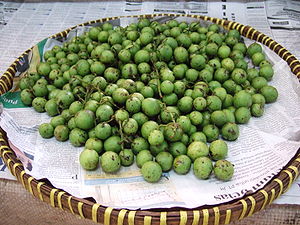Difference between revisions of "Bouea macrophylla"
Jump to navigation
Jump to search
m (1 revision: Bouea macrophylla) |
(cut down) |
||
| Line 7: | Line 7: | ||
}} | }} | ||
| − | + | {{Ack-Wikipedia}} | |
| − | |||
| − | |||
| − | |||
| − | |||
| − | |||
| − | |||
| − | |||
| − | |||
| − | |||
| − | |||
| − | |||
| − | |||
| − | |||
| − | |||
| − | |||
| − | |||
| − | |||
| − | |||
| − | |||
| − | |||
| − | |||
| − | |||
| − | |||
| − | |||
| − | |||
| − | |||
| − | |||
| − | |||
| − | |||
| − | |||
| − | |||
| − | |||
| − | |||
| − | |||
| − | {{ | ||
| − | |||
| − | |||
| − | |||
| − | |||
| − | |||
| − | |||
| − | |||
| − | |||
[[Category:Anacardiaceae]] | [[Category:Anacardiaceae]] | ||
| − | [[Category: | + | [[Category:Plants for Keenan to eat]] |
| + | [[Category:Plants for Keenan to eat in Southeast Asia]] | ||
Latest revision as of 14:59, 26 August 2018
| Bouea macrophylla | |
|---|---|

| |
| Immature Bouea macrophylla in a basket | |
| Scientific classification | |
| Kingdom: | Plantae |
| Clade: | Angiosperms |
| Clade: | Eudicots |
| Clade: | Rosids |
| Order: | Sapindales |
| Family: | Anacardiaceae |
| Genus: | Bouea |
| Species: | B. macrophylla
|
| Binomial name | |
| Bouea macrophylla Griffith
| |
Acknowledgements
This article uses material from the Wikipedia article Bouea macrophylla, which is released under the Creative Commons Attribution-Share-Alike License 3.0.